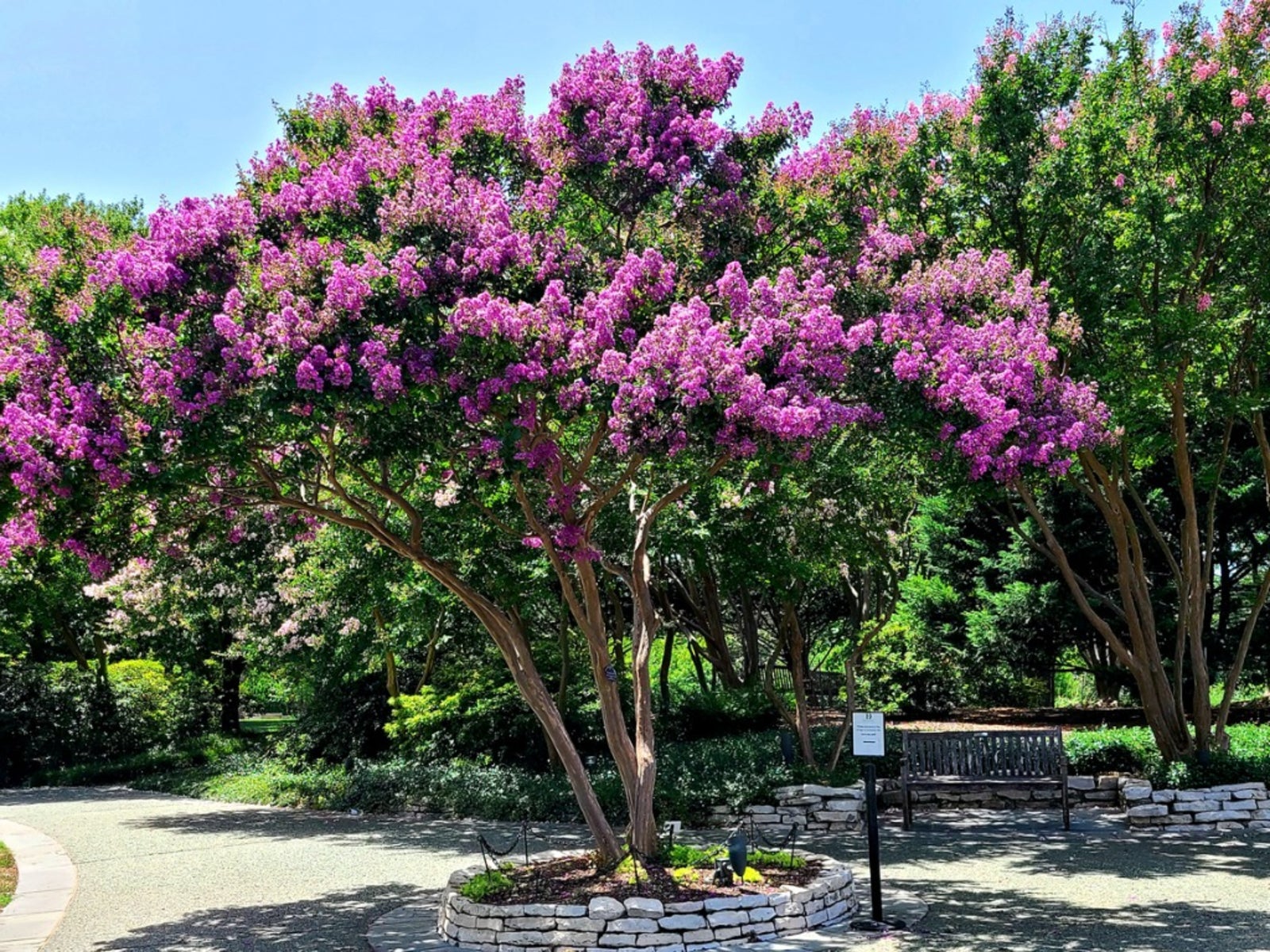White Scale On Crepe Myrtles – How To Treat Crepe Myrtle Bark Scale


What is bark scale on crepe myrtles? Crepe myrtle bark scale is a relatively recent pest that is affecting crepe myrtle trees in a growing area across the southeastern United States. According to Texas AgriLife Extension, this harmful pest is newly introduced from the Far East.
White Scale on Crepe Myrtles
Adult white scale is a tiny gray or whitish pest easily identified by its waxy, crust-like covering. It can appear anywhere but is often seen on branch crotches or near pruning wounds. If you look closely under the waxy covering, you may notice clusters of pink eggs or tiny nymphs, which are known as “crawlers.” Female pests exude a pinkish liquid when crushed.
How to Treat Crepe Myrtle Bark Scale
Crepe myrtle bark scale treatment may require several different techniques, and management of the pest requires persistence. Scrub the pests away – It may sound odd but scrubbing the tree will remove many of the pests, thus making other treatment more effective. Scrubbing will also improve the appearance of the tree, especially if the scale has attracted black sooty mold. Mix a light solution of liquid dish soap and water, then use a soft brush to scrub the affected areas – as far as you can reach. Similarly, you may want to use a pressure washer, which will also remove loose bark that creates a handy hiding place for the pests. Apply a soil drench – Drench the soil between the tree’s drip line and the trunk, using a systemic insecticide such as Bayer Advanced Garden Tree and Shrub Insect Control, Bonide Annual Tree and Shrub Insect Control, or Greenlight Tree and Shrub Insect Control. This treatment works best between May and July; however, it may take several weeks for the substance to make its way throughout the tree. A soil drench will also control aphids, Japanese beetles, and other pests. Spray the tree with a dormant oil – Apply dormant oil generously, using enough oil to reach cracks and crevices in the bark. You can use dormant oil between the time the tree loses its leaves in fall and before new foliage emerges in spring. Application of dormant oil can safely be repeated while the tree is still dormant.
Crepe Myrtle Bark Diseases from Scale
If your crepe myrtle is affected by white scale, it may develop black sooty mold (In fact, the sooty, black substance may be the first sign of white scale on crepe myrtles.). This fungal disease grows on the sweet substance excreted by white scale or other sap-sucking insects such as aphids, whiteflies, or mealybugs. Although sooty mold is unsightly, it is generally harmless. Once the problem pests are controlled, the sooty mold problem should resolve.
Gardening tips, videos, info and more delivered right to your inbox!
Sign up for the Gardening Know How newsletter today and receive a free copy of our e-book "How to Grow Delicious Tomatoes".

A Credentialed Garden Writer, Mary H. Dyer was with Gardening Know How in the very beginning, publishing articles as early as 2007.
-
 Looking For Plants To Give You The Soft And Fuzzies? Try These 5 Fuzzy Leaf Plant Options
Looking For Plants To Give You The Soft And Fuzzies? Try These 5 Fuzzy Leaf Plant OptionsLovers of texture, drama, silver foliage and tactile plants will adore these special sensory garden additions. These fuzzy leaf plant options will leave you all aglow
By Susan Albert
-
 Get Ready For A Summer Of Hummers! Grow These Full Sun Hummingbird Plants and Flowers
Get Ready For A Summer Of Hummers! Grow These Full Sun Hummingbird Plants and FlowersIf you’re lucky enough to enjoy a sunny backyard, make sure you are maxing out on your pollinator opportunities and grow these full sun hummingbird plants and flowers
By Tonya Barnett